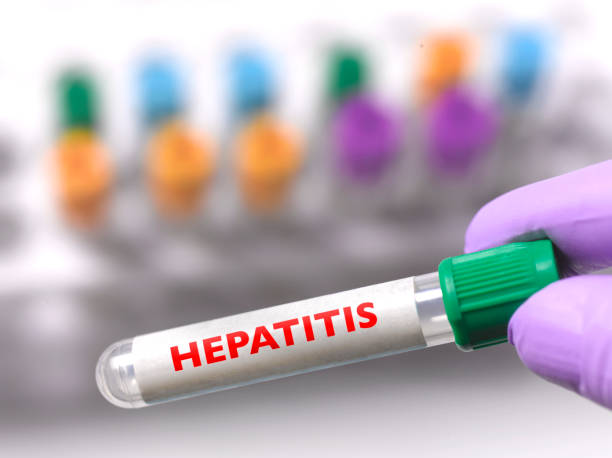Viral infections refer to the multiplication of a damaging virus inside one’s body. Viruses cannot survive on their own and therefore depend on a host to replicate. Viruses are both advantageous and destructive to the human body.

Read our popular article " How Long Are Viral Infections Contagious?"
Some of the viruses shield the body from other infections and others participate in the process of evolution since they enable the transfer of genes from one generation to the next.
On the other hand, viruses are destructive to the human body since they are the main disease-causing pathogens of major viral infections.
A virus refers to a submicroscopic infectious agent that multiplies only within a host; a living agent. It can also be referred to as a collection of particles made up of genetic material and are surrounded by a protein coat.
The virus infects the body by replicating its genetic material in the host’s cells. With an effective viral infection, the virus multiplies itself making similar viral particles and distributing them to different parts of the host’s body.
In some cases, these multiply cells, “eat off” the host cell for some time before eventually destroying it (killing it). The symptoms of a viral infection only show up once the host cells are destroyed and the related immune system weakness. Some viruses, however, tend to stay in an inactive mode for some time after infection.

Transmission of viral infections
The contagiousness of viral infections varies depending on the virus that caused them. The contagious period of viruses may be before the incubation period is over or after the incubation period; once signs and symptoms start to show.
Transmission of viral infections varies depending on the type of infection. Some viruses can be transmitted through touch, body fluids, and even air. Others can be transmitted through sexual contact or by sharing contaminated needles.
Insects, for example, ticks and mosquitoes also act as vectors in transmitting viral infections from one host to another.
There are different types of viral infections: respiratory viral infections, viral skin infections, viral food poisoning, and viral infections in STIs. Below are some of the infections:
1. Respiratory viral infections
These are the type of viral infections that affect the respiratory organs; lungs, throat, and nose. The breathing passages are infected leading to congestion and difficulty in breathing. Their mode of transmission is through the inhalation of droplets that contain the virus particles. These infections include colds, the flu, and bronchiolitis. Examples of these infections are:

Rhinovirus
Rhinovirus is a typical virus that is mainly known to be the causative agent of the common cold and the flu. The symptoms associated with rhinovirus include severe coughing, sneezing, light-headedness, and sore throat. These symptoms may be consistent up to two weeks after infection.
Treating Rhinovirus generally concentrates on symptomatic relief and prevention of person to person spread. Rest, hydration, and nasal decongestion are also effective ways of treating it.
Seasonal Influenza
This is an acute respiratory infection mostly known to be caused by influenza viruses. The infection is known to circulate throughout the world. Every year, five percent of the population in America are infected with the virus.
The symptoms related to the infection are severe coughing, sneezing, body aches, and severe fatigue.


2. Viral food poisoning
Most food poisoning is caused by viral infections. Transmission can be through the fecal-oral route; the person gets the virus by ingesting viral particles that were shed through the feces of an infected person.
This can be prevented by frequent washing of hands after visiting the washroom. They include:
Hepatitis A
This is a viral infection caused by the Hepatitis A virus that affects an individual for a few consistent weeks.
It is highly contagious and spreads through contaminated food or water and contact with an infected person. The symptoms associated with this infection include yellow skin, nausea, diarrhea, and vomiting.
This infection can be treated through adequate rest and hydration while avoiding alcohol and then the infection will clear all by itself.

Norovirus
This is an infection that causes an infected individual to experience severe vomiting and diarrhea. It is mainly spread through food and water that is contaminated or has been in contact with contaminated surfaces or through contact with an infected person.
The symptoms that are related to this infection include nausea, abdominal pains, diarrhea, muscle aches, headaches, tiredness, and fever. Norovirus can be treated via the intake of plenty of fluids to replace those lost through diarrhea and vomiting.

If severe, one can be treated through the use of fluids administered through the vein (intravenous or IV fluids).

3. Sexually transmitted viral infections
These are infections whose transmission is through an individual coming into contact with the blood and fluids of an infected person. Some sexually transmitted diseases can be spread through blood transfusion.
These infections can be prevented through abstinence, the use of protection during sexual intercourse, staying faithful to one’s partners, get vaccinated, and sterilization of medical equipment such as syringes.
They include:
Hepatitis B
This virus is transmitted through contaminated blood and the exchange of body fluids for example semen. The infection causes inflammation of the liver.
The symptoms related to Hepatitis B include having yellow eyes resembling jaundice, abdominal pain, and the presence of darkness in the urine. In extensive cases, the individual may experience liver failure, cancer, and scarring. Small children do not exhibit any symptoms.

Treatment of the infections depends on severity since it clears on its own. However, chronic cases require medication and a liver transplant.
HIV/ AIDS
HIV (Human Immunodeficiency Virus) is the virus that causes AIDS. The virus affects the T cells which are the main constituents of the immune system. The consistent spread of the infection within the host’s body lowers the immunity of the body and therefore leaves the body weak and unable to fight other infections.
Symptoms associated with HIV include mild fever, fatigue, weight loss, night sweats, and recurrent infections.
No cure has been found yet to cure AIDS.
The strict following of the physician and intake of antiretroviral regimens (ARVs) is expected to slow the disease’s progress and prevent the further attack from secondary infections.
References
Jerome, K. R. (2016). Lennette’s laboratory diagnosis of viral infections. CRC Press.
Singh, S. K. (2014). Human respiratory viral infections. CRC Press.
Viral sexually transmitted diseases—Advances in research and treatment: ScholarlyBrief. (2013). ScholarlyEditions.
